Swarm mission makes magnetic maps
- Published
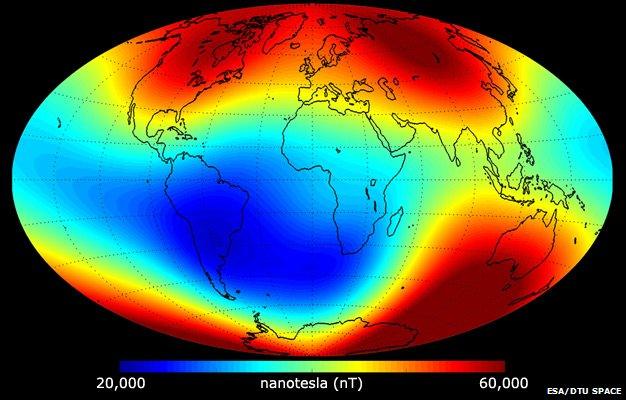
A field snapshot in June. Reds are strong; blues are weak. The view is dominated by the core contribution
Europe's Swarm space mission has begun making maps of Earth's magnetic field.
Data just released shows how the field generated in the planet's liquid outer core varies in strength over the course of a few months.
Swarm's early assessment appears to support the prevailing view that this magnetic cloak in general is weakening.
Many experts believe it heralds a flip in the poles, where north becomes south and vice versa, although it would take thousands of years to complete.
The European Space Agency's Swarm mission was launched last November.
It comprises three satellites that are equipped with a variety of instruments - the key ones being state-of-the-art magnetometers that measure field strength and direction.
They fly in a configuration that offsets one platform from the other two.
The intention is that this should provide a three-dimensional view of the field, and make it easier to tease apart its various components.
In the release this week from Esa, we get a view that is dominated by the contribution (95%) from the core. But eventually, Swarm will have the sensitivity to describe magnetism from other, more subtle sources, including that generated by the movement of our salt-water oceans.
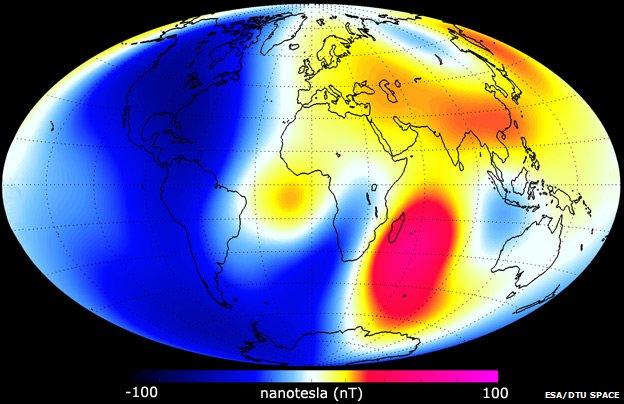
Change in the field since January. Reds are a strengthening; blues are a weakening
The maps on this page use the magnetic unit of a nanoTesla. Earth's field typically has a full strength of some 50,000nT.
The maps illustrate a snapshot (in June) and the change that occurs through time (January to June). In the latter, field strength is seen to drop over the western hemisphere but rise in other areas, such as the southern Indian Ocean.
Earth's magnetic field is worthy of study because it is the vital shield that protects the planet from all the charged particles streaming off the Sun.
Without it, those particles would strip away the atmosphere, just as they have done at Mars.
Investigating the magnetic field also has direct practical benefits, such as improving the reliability of satellite navigation systems which can be affected by magnetic and electrical conditions high in the atmosphere.
"I started my career in magnetometry and the accuracy we had then in the laboratories was less than what we can fly in space now," explained Prof Volker Liebig, the director of Earth observation at Esa.
"So what we have on Swarm is fantastic, but we need long time series to understand fully the Earth's magnetic field, and we will get that from this mission," he told BBC News.
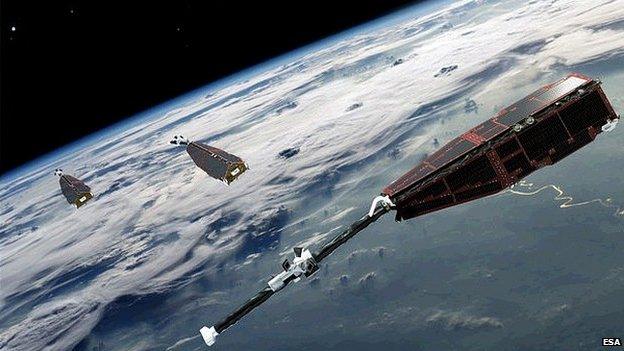
The Swarm fly high above the Earth in a configuration that offsets one satellite from a pair of spacecraft
Jonathan.Amos-INTERNET@bbc.co.uk and follow me on Twitter: @BBCAmos, external
- Published2 May 2014
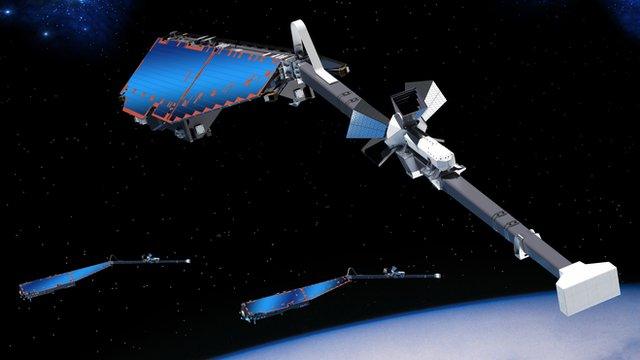
- Published22 November 2013
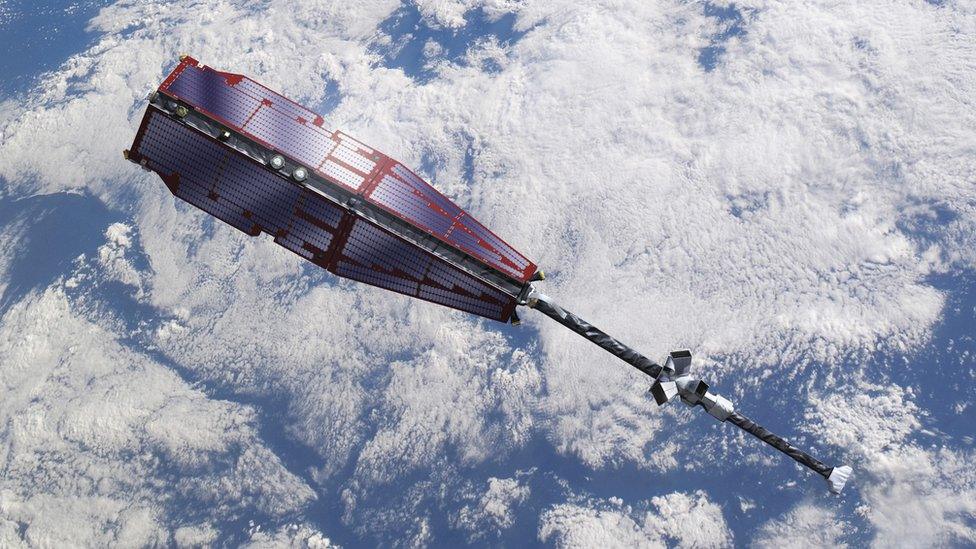
- Published17 December 2010